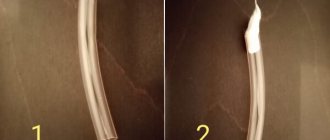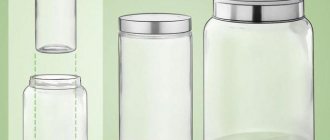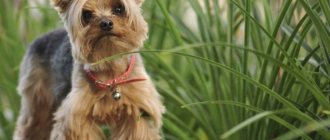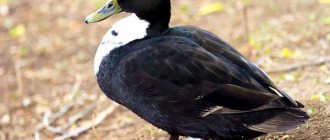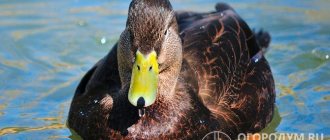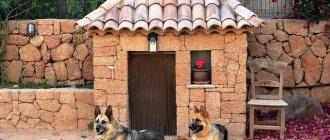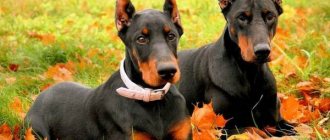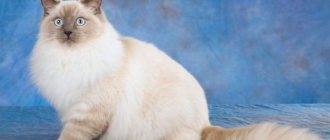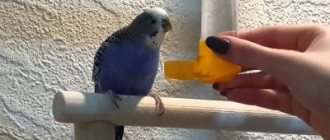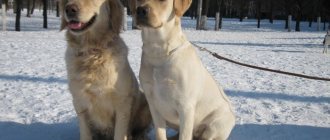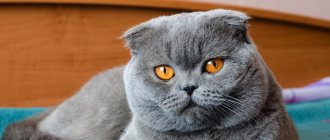What is an ant farm?
An ant farm is a home anthill, which is a container filled with a special gel, sand or other filler. In it you can easily observe everything that happens inside the ant family.
Scientifically, an ant farm is called a “formicarium”. For the Russian market this product is still quite exotic. But gradually formicaria are gaining well-deserved popularity.
An ant colony is like an exotic pet. There are no special problems in its maintenance, and observing the inhabitants of the anthill is a very exciting activity. At the same time, you get the opportunity to see the development of the colony from the very beginning.
Recently, formicariums have begun to be purchased for offices. Some might want to use it on their desk, since farms are compact and don’t take up much space. And someone buys large farms for the hall or for the boss’s office.
Many people give ant farms as an original gift. Ants are social insects, so you can watch them for hours, they are constantly doing something and interacting with each other.
Children will simply love the ant farm! They are interested in what happens inside the anthill and how these insects develop. They have the opportunity to grow a huge family from a small colony of 20–25 ants. The formicarium also allows children to get to know nature better and, at least for a while, take their mind off gadgets. While looking after the ants, they learn a lot about the fascinating world of these insects, which have been living on our planet for several million years. And for adults, such observation is the best way to disconnect from everyday worries for at least an hour and let the body relax.
Inhabitants of the formicarium
There are a huge number of species of ants, completely different from each other. For example, there is such an amazing species as Amazon ants, which rob the anthills of other species and drag away the larvae from there. Subsequently, the captive ants become their slaves and look after the Amazons.
There are leaf-cutter ants that live inside the mycelium, which they grow themselves. Their jaws are very well adapted for cutting leaves into small pieces and carrying them to the mycelium, and then building a dwelling from it, as well as feeding on it.
There are real giants in the world of ants, reaching a length of 4 centimeters.
Ants are mainly divided into hunters and gatherers. Hunters need protein food and carbohydrates; they are predators and hunt insects. It is very interesting to watch how ants use their antennae to chase prey by smell. When one of the ants finds syrup or fruit, on the way back to the anthill, it marks the road with its abdomen, which allows its fellows to quickly find their way to food. All these interesting points will be clearly visible to you in your home farm.
Gatherer ants differ from hunters in the peculiarities of their content. They feed mainly on what they find. Mostly these are plant seeds (poppy, rapeseed, millet). They will also not refuse protein foods. They can eat dead insects or the same boiled chicken (if we talk about a home ant farm). They do not hunt insects, they only defend themselves. But these ants have a very interesting internal structure of the anthill. There are food storage chambers (warehouses where they store seeds for a long time), birth rooms, dining rooms (where they bring seeds, soften them with moisture and eat them), rooms for caring for the young (in these rooms the ants care for and feed the larvae). And all the processes that occur in the formicarium can be observed with your own eyes!
As a rule, insects within the same family are divided into castes: scouts, workers, nurse ants, soldiers and queen. Almost every species has scouts; they make up a small percentage of the total population of the anthill. Their task is to explore unfamiliar territories and look for new food sources. Workers are the main hard workers of the colony; they build, transport food, sort warehouses, and clean the anthill. Soldiers differ from the rest in their larger size, have a large head and powerful jaws. The nannies practically do not leave the young; they feed the larvae and the queen itself.
The queen is the No. 1 person in the colony. All the inhabitants of the anthill are born from the same womb, that is, they are all brothers. The task of the uterus is only to give birth to new ants. She doesn't even get food herself. There are some species in whose colonies several queens can exist.
Each anthill and its inhabitants have their own unique smell, so even ants of the same species, but from different anthills, will be at enmity with each other.
comparison table
For the convenience of readers, I have summarized the main characteristics of all ant farms presented in the rating into a single table. This will allow you to quickly compare the parameters of any two models you like, which will greatly facilitate the choice.
| Model | Material | Layout | Number of ants | Number of humidification chambers | Dimensions |
| Antwill Loft “Tree” | Acrylic | Horizontal | 1350 pcs | 2 pcs | 230x230x60 mm |
| Smart “Tree” | Acrylic | Horizontal | 500 pcs | 1 PC | 165x120x70 mm |
| Antwill Mini “Summer Day” | Acrylic | Horizontal | 500 pcs | 1 PC | 105x180x60 mm |
| "Ecosystem" | Acrylic | Vertical | 6000 pcs | Autonomous system | 250x160x160 mm |
| "Tropics" | Acrylic + plaster | Vertical | 1200 pcs | 2 pcs | 190x170x100 mm |
| AntLabs “Land” Green moss | Acrylic + plaster | Vertical | 1500 pcs | 1 PC | 229x140x120 mm |
How to care for an ant farm?
An integral part of the formicarium is the arena, where, in essence, the aboveground life of the colony occurs. Here the ants find food (of course, if the owners put it there in a timely manner), water, and a landfill is organized here. The farthest corner of the arena is usually reserved for it, where the garbage is folded into a neat pile.
Comfortable conditions for the inhabitants of the formicarium
In the formicarium it is necessary to create special conditions, a microclimate that is comfortable for ants. There are few of them (conditions). Firstly, you need to maintain the temperature at 22-26° C, and secondly, the air humidity should be in the region of 70-90%. Ventilation is also necessary.
Feeding the ants
The colony needs two types of food: protein for the larvae and carbohydrates for the adult ants. Forage insects (crickets, mealworms, etc.) are usually used as protein food, which can now be purchased at almost any pet store. But if you couldn’t get the insects, it doesn’t matter! Ants will happily eat veal or chicken, egg whites, and fresh or boiled shrimp. The only thing worth cautioning against is not to feed the inhabitants of the formicarium with street insects - they can be poisoned by chemicals.
With carbohydrates, everything is generally simple. Even ordinary sugar, which needs to be diluted with water, will do. You can also give fructose or glucose. Ants also eat fresh fruits (grapes, pears, apples, oranges, tangerines) with great appetite. As a rule, they will not refuse marmalade or marshmallows (but it is still better to refrain from industrial sweets). There are also types of ants that feed mainly on seeds (for example, Messor structor). They are also a bit of a hassle - a pack of canary food will last them for a whole year. In general, there is always something to feed small pets in the house.
Remember that “food” should always be fresh and in sufficient quantities - the inhabitants of the formicarium will figure out for themselves how much and when to eat.
And don’t let the apparent difficulties scare you at the beginning of your journey, in reality there are not many of them. After all, an ant colony is a large organism with excellent self-regulation. If you inadvertently forgot to moisten the formicarium, the insects will fetch water from the drinking bowl and do it themselves. If they fail to feed, they will start using the prepared supplies.
FAQ
- Why can't you catch ants with your hands?
Small insects are easy to damage. Injured ants soon die.
- What types of ants are suitable for gel ant colonies?
Incubator
With the stable development of the ant family, problems may arise with the supply of food inside the incubator, since curious ants will try to run out at any opportunity to explore the surrounding world, and the most daring, courageous and aggressive individuals may attack, since they will regard the intrusion as a threat to the colony.
Of course, such conditions exclude the possibility of quiet feeding, and it is necessary to expand the formicarium area by connecting an arena.
The arena is a structure that plays the role of space outside the nest. In this territory, the ants will collect food, remove garbage, and study various decorative elements previously placed by you. This option greatly simplifies the process of feeding insects - it is enough to simply place a feeder with a treat (syrup, other types of food insects, seeds) in the arena.
Tips for beginners
If you decide to set up an ant farm at home, you should know what not to do while maintaining it:
- Leaving ants without water.
- Ants love the dark. Install the formicarium in bright places or places where direct sunlight falls.
- Forget about hydrating the farm.
- Give the ants plenty of food.
- Make noise near your home anthill, play loud music.
- Close the openings of the formicarium intended for its ventilation.
- Move the farm unnecessarily.
- Place the formicarium near the source of vibration.
Where can I get ants?
Now there are a couple of ways that allow you to get ants. The easiest way is to purchase them at a pet store, poultry market, or order them from a specialized online store. Ant farms are also sold on Avito, where you can find any variety - reaper, red, black forest, red, carpenter, etc., with a queen and workers, they usually cost more. You can choose how many ants will be included in the set.
The most obvious source of insects is nature. The ant can survive in almost any climate and anywhere in the world with the exception of the north and south poles. You can find them near your house, in the forest, in the park. Even large cities are inhabited by such insects.
Let's look at 2 main ways to catch arthropods.
Fishing with bait
When using bait, the fishing process can only take a few hours. To do this, you will need sweet water in a large container - this will definitely attract insects. Periodically collects ants that have wandered into the vessel.
So, take 2 jars or cups and lids, sweet water (you can replace it with honey, bread crumbs), a small stick.
Next, follow these recommendations:
- Search for an anthill where suitable species of ants live. Large black insects are best suited for this type of fishing. Red ants can be a fiery species - they are a dangerous predator that stings painfully.
- Preparing a trap: place a sweet solution (water + sugar) in a jar or cup with a large neck, but there should be little liquid so that the ants do not drown. Try to distribute the solution thinly on the bottom. The sweetness will attract insects, and they will quickly go to investigate the situation. For the best effect, draw a trail of treats.
- Leave the vessel with the prepared solution near the anthill for a couple of hours. After some time, several individuals should appear there; if this happens, close the container with a lid. It is recommended to leave the cup in the same place so that the arthropods find it faster - this time the procedure will take less time, since the individuals leave a trail with special secretions for their fellows.
- Take the sticks and lure the insects to it, then shake them into an empty container with a small amount of water, and then close the lid.
- It is necessary to leave the caught insects inside the jar for two to three days - this will allow them to clear themselves of debris, thereby eliminating the possibility of contamination of the artificial formicarium. Otherwise, mold may appear.
- Now you can move the arthropods from the jar to the farm - use the same stick.
Preparing to create a formicarium
If the formicarium is made independently, then you need to take into account a lot of nuances. This process does not tolerate miscalculations, mistakes and requires a lot of experience. Thus, the farm must have drinking bowls, feeders and humidification chambers. Otherwise, the ant colony will simply die.
The best solution is to buy a ready-made formicarium, which has everything the ants need and is ready for them to move in. The myrmikiper can only prepare water and food in advance, the quality of which will determine the vital activity of the insects.
